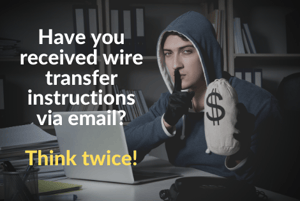
Today, Microsoft is ending support for Windows 7. And while MDaemon and Security Gateway continue to support Windows 7, it’s a good idea to consider updating your Windows installation or migrating to an updated system.
By Brad Wyro posted in Email How To, MDaemon Email Server, Security Gateway for Email, Email Server

Today, Microsoft is ending support for Windows 7. And while MDaemon and Security Gateway continue to support Windows 7, it’s a good idea to consider updating your Windows installation or migrating to an updated system.
By Brad Wyro posted in Business Email Compromise, Email Security, Cybersecurity, Spear Phishing, Phishing, Email Security Best Practices
 Earlier this week, I heard an interesting interview on NPR’s Morning Edition with a recent victim of Business Email Compromise (BEC), a growing threat that uses social engineering to exploit human nature in order to divert massive amounts of money to cybercriminals.
Earlier this week, I heard an interesting interview on NPR’s Morning Edition with a recent victim of Business Email Compromise (BEC), a growing threat that uses social engineering to exploit human nature in order to divert massive amounts of money to cybercriminals.
By Brad Wyro posted in Product Updates, Security Gateway for Email
If you're in charge of managing your company's email, whether you're running an in-house Exchange server or Office 365, you've certainly become all too familiar with the latest threats posed by cybercriminals - threats that go far beyond the old-school Nigerian Prince email scam that has become the brunt of jokes over the past couple of decades. So if protecting your employees from email-borne scams is important to you & your business, a secure email gateway to protect against phishing, malware, data leaks and other threats would be a sound investment.
By Brad Wyro posted in Business Email Compromise, Email Security, Spear Phishing, Email Spoofing, Phishing
Online scams are nothing new. But as email has evolved and improved, so have scammers and the messages they send. Nefarious emails, attachments and links now appear sophisticated and look legitimate, sometimes tricking even the most meticulous user.
Staying informed of the latest data privacy regulations can be a challenging endeavor, with a plethora of different security and retention requirements based on industry. And as these laws and regulations continue to evolve, businesses will need to evolve as well to keep up.
By Brad Wyro posted in MDaemon Email Server, Product Updates, Email Server
The news is out. There’s a new version of MDaemon Email Server, with new features and improvements to benefit both administrators and end-users alike!
By Brad Wyro posted in Industry Insight, Two-Factor Authentication, Email Best Practices
While many businesses are moving their email from on-premises to the cloud, many that have already made the switch have discovered that cloud hosted email has its share of drawbacks to go along with the benefits these businesses had originally sought.
By Brad Wyro posted in Business Email Compromise, Email Security, Stop Spam Email, Spear Phishing, Phishing
This week, Threatpost reported on a new spear-phishing attack that uses email sent via Google Drive claiming to be the CEO of the targeted company sharing important information with the recipients. The email came from Google Drive, but the sender address didn't match the company's standard naming convention for email addresses.
By Brad Wyro posted in Email Security, Product Updates, Email Archiving
When it comes to email archiving, businesses require features that go beyond simple message replication in order to meet expanding regulations. And because every email solution, whether it’s on-premises or in the cloud, needs strong anti-spam/anti-malware filtering, it makes sense to combine archiving and security into a single product. To address the growing demand for a combined email security/archiving solution, archiving was added to SecurityGateway for Email in version 6.0.
By Brad Wyro posted in Industry Insight
 MDaemon Email Server and Security Gateway customers have made it clear – MDaemon Technologies delivers safe, secure email solutions that fit their unique business needs at a great price.
MDaemon Email Server and Security Gateway customers have made it clear – MDaemon Technologies delivers safe, secure email solutions that fit their unique business needs at a great price.
MDaemon Technologies is a pioneer in developing email and email security software helping to protect customers from evolving cyber-security threats. Its products and services are trusted by thousands of organizations in over 140 countries. For more than two decades, the company’s products have been developed with the ongoing input of IT professionals who demand reliable, affordable software that requires minimal effort to manage.
The software can be deployed in virtual, hosted cloud, on-premises, or hybrid network environments. The company sells its software and services directly and through a network of global channel partners.
For more information, visit www.mdaemon.com.
Copyright © 1996-2025 MDaemon Technologies. View privacy policy.